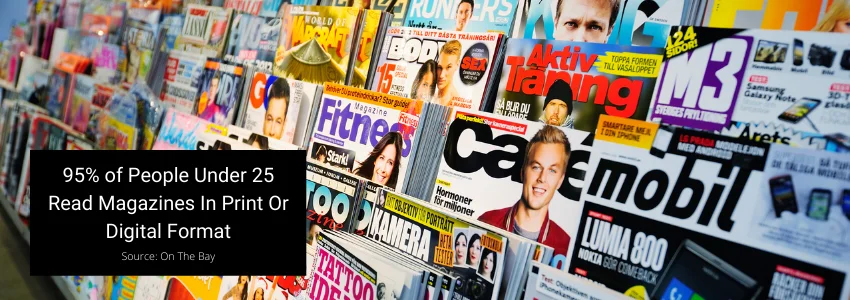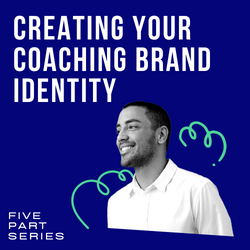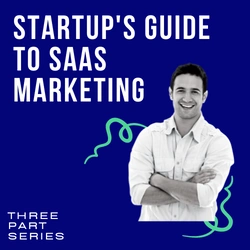Are You Ready For PR? Be Prepared Like A Publicity Pro To Promote Yourself Effectively Plus 5 Golden Rules of Media Relations
Table of Contents
Coaches and entrepreneurs are used to using new business marketing strategy to get their name out there. To become successful, they’ve had to master it. Likely so have you.
Are you currently working hard creating content and promoting it? Are you blogging? Podcasting? Using social media platforms? You’ve probably mastered all of those things by now. Marketing is an important part of your business. Do what it takes to put yourself out there. But there comes a time when all this effort stops increasing the number of people you can reach.
Organic traffic gets to a point where it plateaus. You might have even paid for ads, but are seeing no dramatic increase in website visitors. Email lists stop growing. Worse yet, the money coming in isn’t increasing. What is a coach to do?
It could be time to think about contacting a professional to get some of that media attention you need. First, be prepared and have a plan of what you need to organize to be media ready. If you don’t have a few things set in place, it could become a total waste of time and money.
Learn To Be a Show Off and Show Off Your Expertise
You could be the best coach in your field, but how are people supposed to know that?
You might blog about your topic. Sharing tips on social media. Giving advice to people online. All those things are great, but you have to do more than just that. You also have to look the part. This means you have to focus on creating a quality branding experience.
People need to know what area of expertise you have. Your branding should do a good job of making you and your work recognizable to your audience so as soon as they see you, they know you will discuss personal effectiveness and productivity for daily work-life balance, if that is our area of expertise. Or perhaps you are a relationship coach, and you focus on helping people have healthy relationships with their loved ones.
Maybe you’re a dating coach, and you help people find their next partner to whom they will have a happy and long relationship thanks to the advice you gave about relationships. Whatever you do, when people see you online or even at events, they should have a fair idea of what you are going to be talking about.
They should have at least a vague idea, something relating to your topic that you have a lot of knowledge in. You should also enjoy sharing that knowledge because people will see your passion, and it will draw them to you. You will become unstoppable when people see how you shine, when you talk about topics close to your heart. And you will help more people this way too.

Hone Your Branding So You Are Always Ready For Attention
It’s so important for you to have established a consistent branding experience for your audience. This requires going deeper than just the graphic elements like logos, fonts and color pallets. You also need to be clear about your unique message, who your ideal audience is, your specialty and your brand voice. It includes all the things that your audience recognize when they see your branding to let them know it’s you.
This consistency with your brand makes you recognizable. Once you have this all perfected, it will position you to be someone the media could approach when the time is right, and they need someone like you. Ensure your message and branding match and present you in the best light possible. Look at your brand as an outsider would.
What To Look For When Updating Your Branding
Some things you might need to revisit when updating your brand include the following.
- Is your logo professional? If not, have it updated
- Your unique selling proposition perfected, and you’re able to tell it to people in a clear and concise manner and hook them in with it
- Your website and blog invest in a new theme or even better, have it professionally designed
- Social media profiles (including pages and groups) including LinkedIn and Pinterest boards
- Coaching and training programs and their websites
- Your YouTube channels
- Podcast message and design
- A media page that’s well written and includes great headshots
Make sure your website is edited properly. If there are mistakes in your blog posts, this comes across unprofessionally. Have an editor go over it, checking for grammar and spelling errors and making sure it is all well written and positions you as the expert you are. At the very least, read it out loud and get a friend to help you go over it.
Professional Photos and Swipe Files
If you were approached by a big media outlet now and asked about your opinion on something related to your expertise, could you give them a response right away with your headshot and bio? If it took over 5 minutes, you’re not ready yet.
Having a file with all the relevant media ready for you whenever you need it is an important part of any media campaign. Before you consider approaching a PR specialist, it’s important to have all this ready and in place. Just like your branding guidelines, you should have a swipe file with all the relevant information and images ready for you to access easily.
Some things to include in this file are:
- Professionally done headshots: Don’t risk having an old Facebook photo used alongside your bio. Invest in some quality headshots to use whenever you deal with the media and present yourself as the professional you are.
- Your bio: Make sure you have prepared a well-thought-out, well written and edited bio. It’s best to provide your own bio, lest you end up with one that’s written about you that you may not like. Use this opportunity to promote yourself in a good light.
- Contact info: Up-to-date contact info that’s accurate is important if you want people to reach you. If your email isn’t correct, you could miss out on opportunities. People don’t have the time to go searching for the right one, they will just go to someone else who they can reach.
What About Your Clear and Unique Message And Ideal Audience or Buyer Persona?
It might seem better to have a wide range of specialities, it actually pays to hone in on one area and excel at that. Experts in their field are experts at what they do, and they focus on just that. By concentrating on one area, you can really dive deep instead of just touching on the surface of the topic.
Same goes for your ideal customer. You can’t serve everyone out there, but you can help one particular type of person and do it well. Make sure you have a clear idea of the type of person you aim to help, and focus on them. In marketing, we refer to these types of people as your buyer personas – your demographic. Only rarely should you look outside this small group of people you want to serve. By perfecting this skill, you will be able to hyper-target your marketing and your message.
Have You Defined Your Hook and Unique Selling Proposition (USP)?
You need a hook. This is like your unique selling proposition. You need to explain who you are and what you do quickly and succinctly. But it needs to explain why you are the best at it, or what makes you different from all the rest. Tell people how you do what you do and why you are unique.
Explain what sets you apart, but do it quickly. This might take some thought, but shouldn’t be too hard to come up with. Just focus on what makes you, you.
One way to come up with your USP is to fill in the blanks in this sentence. I help __(who)__ to do _(what)___ by ___(how)___because I ___(why)__. This is where you need to fit in, what sets you apart from the others.
You might say I help couples have the ultimate relationship with each other because I have spent years learning to help people communicate, and I love to see when they are fully satisfied in their love lives thanks to my expert help. If you are a relationship coach, that might be similar to your line.
Better yet, really dig deep. First, think about your ideal client avatar. How do you help them? What benefits do you offer? Then what do you do which your competitors don’t, or what do you do better than they do? Focus on the benefits to your client and your unique strengths. What is it that defines you differently to the competition? What about you makes you unique, and perfectly suited to the role? Then, use powerful words to help you explain these points.
Don’t just say I offer coaching to people who want to have a better career. Think more like “I help people breakthrough and find their dream careers, so they can leave their dreaded day job behind and prosper in their new-found path to freedom, success and wealth. With my system, developed over the years of coaching clients to create better career paths for themselves. Through this program, they can feel satisfied at the end of each days work.” OK, that may be a little too long. Perhaps you could just cut out the second half and leave it as “I help people breakthrough and find their dream careers, so they can leave their dreaded day job behind and prosper in their new-found path to freedom, success and wealth.”
Or for an intimacy coach, something like “I help couples achieve absolute nirvana in their intimate relationships by using techniques I developed after years of working as an intimacy coach where I found the solution to problems most couples face but many coaches overlook or avoid.” Then maybe add, “The couples I have helped are at the point they would have ended their relationships if they hadn’t come to see me first.” If this is true, then by all means say it. But for brevity’s sake, it’s possibly best to choose one part of that paragraph and stick to that, at least as a basis. Then you can build on that as the conversations you are involved in allow you to.
A last example is, “I help destroy negative thought patterns and beliefs and help create new empowering thoughts that clients believe in and this drives action.” Then, maybe, “By using my own therapeutic mindfulness formula that I designed especially for working mothers to help them de-stress after a busy day working and caring for the children. Now these parents can wind down at the end of the day and spend quality time with their families instead of being too rundown to have that time.”
If you can back up your statement with testimonials and show people proof of what you are claiming, you will have more credibility. Don’t just make up a sentence. Make sure it reflects the work that you actually do. This is about identifying what makes you the most qualified person to do the job you do. Why would people want to hire you or pay to learn from you? You have to give them this information before they can decide for themselves.

Can You Make Your Hook Relatable to Current Affairs or News Cycle?
Monitor current affairs. Consider what opportunities they can bring you and your business. How does what you do relate to what’s going on in the world or your area right now? Also think about events and holidays throughout the year. There are some unique days that get celebrated throughout the year. Perhaps some of them tie into what you do and can be related to some type of media coverage. Some of them are just a bit of fun, like national hotdog day or international kissing day. There are some holidays you can use to play around a bit and have some fun with your marketing.
Aim High But Start Small and Build Up Experience
- What are your media goals?
- What media outlets would you love to give you coverage?
- Big name national news corporations?
- Well-known magazines?
- Talk back shows?
Whatever one’s you would dream of going on, as you know, the chances of being invited on right now are probably slim. For the time being, at least.
None of those things are totally out of the question, though. Long term, anything is possible. But you have to start somewhere.
No Opportunity For Publicity Is Too Small
You likely didn’t begin selling high-priced programs overnight. So, it’s unlikely your media journey will begin at the top. Start by looking into smaller publications like local papers or magazines. Even the local news channel. They all need experts to interview at some stage.
Lucky for you, big name celebrities aren’t likely to show up for an early morning TV show to answer a few questions. But given the chance, you could.
These smaller media outlets give you such great opportunities to share your expertise and grow your brand awareness. They allow you to get your message out there. Which is invaluable.
Practice makes perfect. By starting with smaller media outlets, you’ll get practice at being interviewed and being in the spotlight. This will help prepare you for when bigger offers come your way.
Large Media Outlets Aren't Out of the Question
If you have your heart set on making it on a national level, it’s not completely out of reach. You can get there. You just need to get featured on something like the national nightly or morning news.
Outreach opportunities for the media are always on offer. Keep your eyes out for chances to help them out, even if it is a smaller news outlet. The more often you appear on any media outlet, the more chance you have of being offered other media opportunities.
Of course, when you think of the media, big names usually come to mind.
- The Huffington Post
- The New York Times
- Network TV
- Good Morning America
- The late shows
- The morning shows
Those are just to name a few. While included in those may be your ultimate dream media goals, as they are for many others seeking media attention. There are other outlets that you might not think of straight away, that may be worth considering. These you may not have even heard of, but they can offer you some exposure. And get your foot in the door, giving you experience in the spotlight, even if that spotlight isn’t quite as bright as you would like. That can come later.

Don't Forget Trade Publications and Magazines
Trade publications and magazines within your industry can offer you a foot in the door. While they may not be big names, they have one advantage. They are targeted to a niche audience. You can use this to your advantage.
Seek these trade publications that relate to your industry. Find out what ones exist firstly. Then go after your goal by contacting them and offering your knowledge on a given area, they may be planning on discussing.
They may not be a brag worthy as The Today Show, but they do offer some benefits.
- They usually offer more space for you to share your message.
- They provide you with video clips you can use to promote yourself to the bigger media outlets.
- They offer you exposure to the type of target audience you are seeking to get in front of. Often their audiences are very targeted. You can use this to your advantage.
Also, because they are less likely to have a list of people waiting to be featured in their publications, you have more chance of getting placement in them.
Before you approach these trade publications for exposure, make sure you read some back issues first. Get to know what stories they write. What have they covered before? Think about how you can tailor your message to suit their publication and stand out from the rest of the content.
Identify why you suit their magazine. Make sure you address those things, so they know you are familiar with them, and you can explain what your spin on your topic is. Then they can understand your message and how it fits with their publication better.
Make sure you personalize your message when you send out emails. Tailor one email per outlet, don’t send a generic one to a bunch of places. Let them know you know who they are and what they do. You’ll be more likely to get a response.
Trade publications have a wider reach than you may think. Not only will you be presented to your ideal audience. You’ll also be working towards reaching your goal of getting coverage on a bigger platform.
You Can Go Direct With HARO
Another option for getting your name out there in the media is to go directly to them. Monitor and keep and eye on the site HARO, HELP A Reporter Out. There is journalists and writers every day seeking subject-matter experts on various topics they want to cover in their publications. Some of these writers are in the mainstream news publications you would like to feature in. Others are working for smaller outlets, but all the same it can offer you the chance to be the expert that media outlets trust to give advice to their audience in your area of expertise. This is a valuable opportunity and should not be overlooked. Keep an eye on the HARO site and even HARO posts on Twitter to get an idea of when topics related to your niche are coming up.
The 5 Golden Rules of Publicity
The Story Is The Star And Facts Are Just Co-Stars
A successful PR strategy crafts your brand’s story to appeal to journalists and their specific audiences. Sitting around and spouting facts, features and figures won’t create a riveting story. The facts back up the narrative, but the story itself must be engaging or no one will listen.
Keep The Buzz Going
A new startup with a cool new service or hook will get some buzz at first, but it inevitably dies away quickly. Always be on the lookout for different angles, so you can continue telling the same story repackaged differently. This is how a service stays PR fresh a year after launch.
Old News Is Now No News
Journalists previously filed one to two stories a day. Now, reporters are being required to file up to eight stories each day along with blog posts, tweets and Facebook posts. The news cycle is a commodity market, and anything that isn’t highly relevant is old news.
PR and Social Media Are Not The Same
Public relations and publicity creates a well-designed, cohesive message with relates to media conversations. PR produces fresh, high value content and should be shared through your social media accounts, but they are not the same. They will often compliment each other, but PR provides the content while social media provides the followers and shares to that content.
Hyper-Target Journalists Like You Would Buyers
A media database may list 500 journalists who cover your industry, that doesn’t mean you should contact them all. These days journalists receive hundreds of emails a day from companies and PR firms, most contain irrelevant press releases that only waste time.
Hyper-target the journalists you are contacting just as you hyper-target your buyers. Approaching a journalist with a hyper-targeted story that he or she is covered frequently in the past will make their job easier.
Ensure your message and brand align with the way you present yourself for success.
Having your preferred audience or buyer personas clearly outlined, will help focus your message on the right audience. Showing people through your presentation online and offline will ensure they take you seriously as an expert in your area. Be sure to practice speaking before interviews to begin with, so you can give a better presentation.
You want your message and brand to match up, so they create that overall professional appearance that is so important to the media. When you get those elements in place and aligned correctly, you will find the opportunities will come looking for you, and you can stop working so hard to find them.
If media coverage is one of your goals, remember it is achievable, but it takes some work and patience to get there. In the meantime, be grateful for opportunities to appear on podcasts or other blogs. Then the industry publications you will have become familiar with can be your next target. After that, the sky is the limit.



Hosting a group giveaway is a guaranteed way to multiply the number of subscribers on your list in a relatively short time frame. All that’s required is some proper planning, organization and the right tools. I’m going to walk you through it. Keep Learning >

We’ve all dreamed of making money without having to put in all those hours of hard work every day. Lucky for you, with some upfront work you can create continuous income streams without continuous effort. In no time at all, your coaching services will have a firmer financial foundation. Keep Learning >



